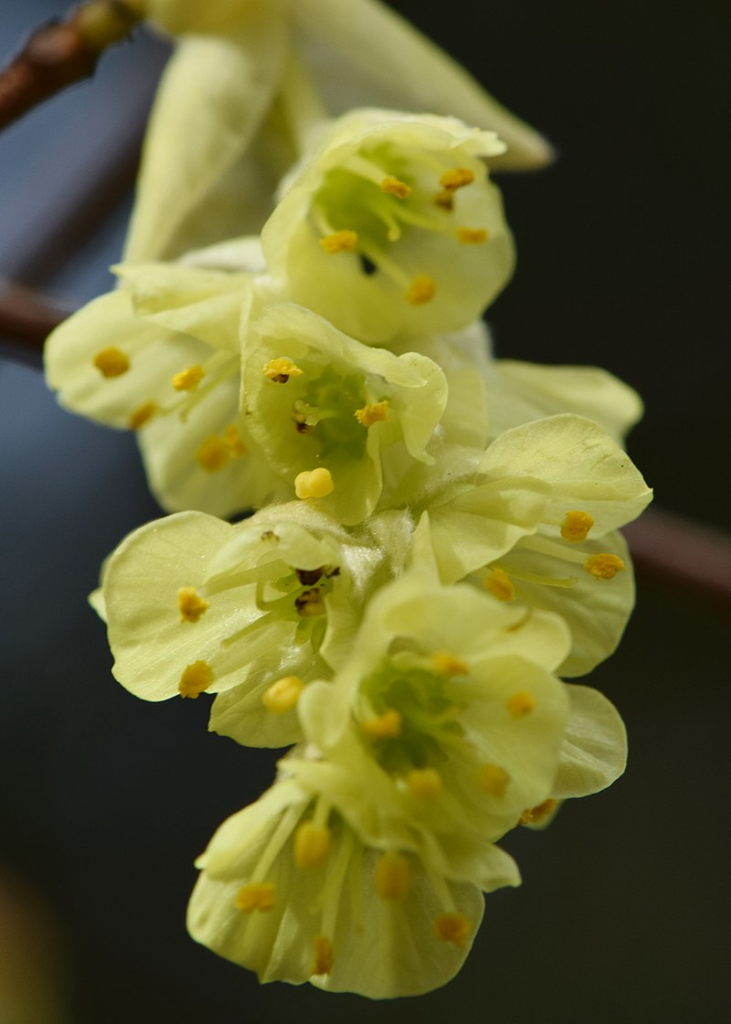
Native to South-Central and Southeast China, this deciduous shrub is a member of the witch hazel family, Hamamelidaceae, that also includes fothergill and loropetalum. Although it grows 8-10 feet in the wild, it can reach 15′ or more in cultivation. The bark is dark brown to dark gray and the stems and slender branches are hairy when young before becoming smooth with maturity. The ovate to broadly ovate leaves are 2-4″ long and have bristle-like margins and prominent veins. The bottom side is blue-gray, the top side is dark green, but may develop a waxy bloom and appear grayish when grown in the sun. Young leaves have silky hairs but become smooth as they age. In spring before the leaves emerge,1-2″ long racemes carry 8-20 greenish-yellow bell-shaped flowers. The flowers are fragrant, 1 to 2″ across, and do well in the vase. The fruit is a 1″ wide brown capsule containing 2 black seeds. Chinese winter hazel is a good choice for a hedge or mixed border as well for use in fragrant, cutting and woodland gardens. The genus name, Corylopsis, is derived from the Greek words korylos which means hazel and opsis which means like or resemblance and refers to the fact that the leaves are similar to those of hazel plants. The specific epithet, platypetala, is from the Greek words πλατύς (platús) meaning broad, and πέταλο (petalon) meaning petal. Photo Credit Krzysztof Ziarnek, Wikimedia Commons

Type: Flowering deciduous shrub or small tree
Outstanding Feature: Flowers
Form: Vase-shaped
Growth Rate: Moderate
Bloom: Racemes of 8-20 greenish yellow fragrant flowers in early spring
Size: 8-15′ H x 8-15′ W
Light: Full sun to partial shade
Soil: Average, consistently moist, well-drained, acidic
Hardiness: Zones 5-8
Care: Plant in sheltered location to protect from wind, snow, and frost; prune immediately after flowering if needed
Pests and Diseases: None of significance
Propagation: Seed, stem cutting, layering
Photo Credit: Krzysztof Ziarnek, Wikimedia Commons